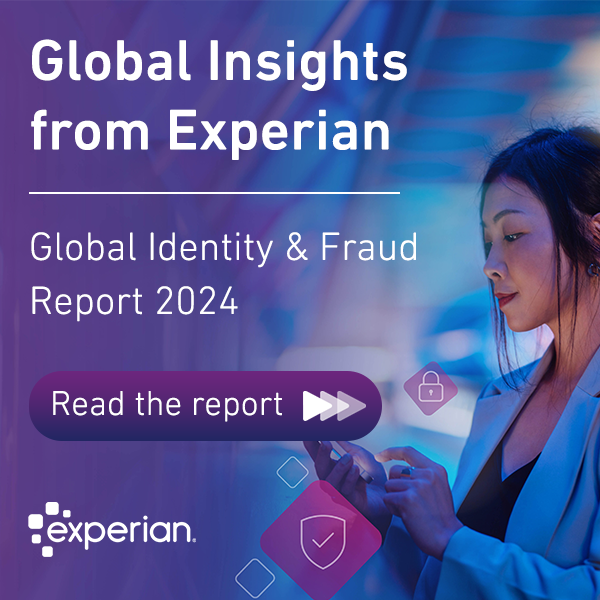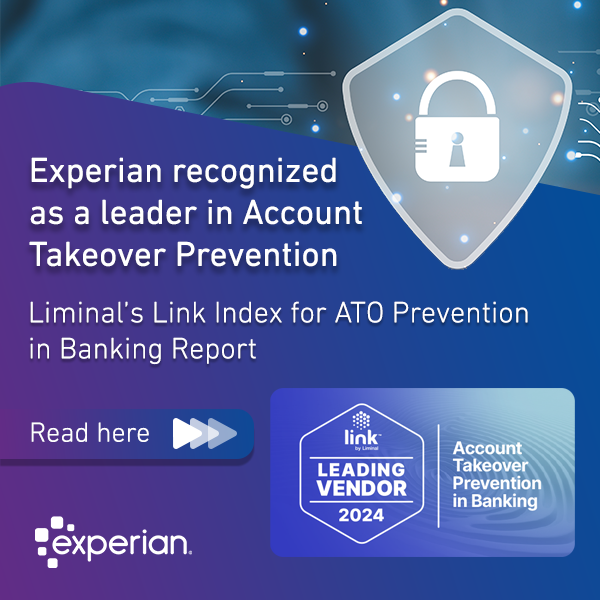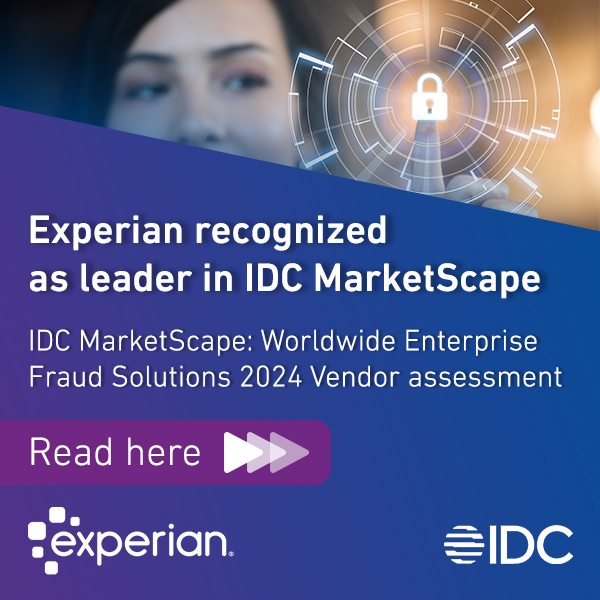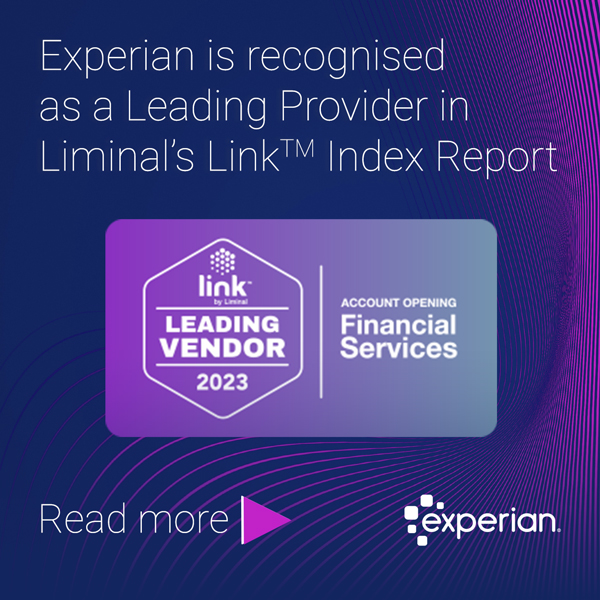Monthly Archives: April 2022

We surveyed 6,000 consumers and 2,000 businesses from 20 countries worldwide as part of our ongoing efforts to learn more about how, why, and where consumers interact with businesses online.

The evolving expectations and experience of the new digital consumer The expectations of consumers are changing rapidly. People of all ages and incomes are online, seeking the right products and services to manage their financial lives digitally in a secure, speedy, and frictionless environment. A look inside: Our latest research reveals the rise of a new digitally savvy consumer—one who is increasingly aware of new payment methods, advanced recognition tools, and the use of AI, and has higher expectations of their digital experience. Read the report to find out what businesses can do to harness the digital opportunity: 1. Leveraging the AI advantage 2. Incorporating embedded finance 3. Introducing new, more secure technologies 4. Educating consumers about how you use their data 5. Exploring solutions that aggregate emerging technologies Online spending is continuing its upward trend, with 53% of consumers surveyed saying they have increased online spending and transactions in the past three months, and 50% predicting that their spending will increase in the next three months. Enabling this shift is the extent to which businesses can provide a quality digital experience. 81% of consumers said that a positive online experience, which includes interactions with multiple digital touchpoints makes them think more highly of a brand. Consumers simply do not tolerate poor-quality online experiences and will take their loyalty to businesses that can meet their expectations. Speed and security are a driving force for consumers in the payments space, which is reflected in rapid rise in mobile wallet payments. Rivalling traditional payment methods, 62% of consumers say they’ve used a mobile wallet in the last six months. Consumers are embracing these new habits across the board, with 18% saying they have used BNPL in the past six months, and 71% seeing it as secure. With the rise and increasing awareness of new payment methods like BNPL, consumers who have lacked access to traditional banking, lending and credit cards now have additional financial options, giving businesses the opportunity to prioritise financial inclusion. The rise of new and increased online activity has resulted in increased concerns about online security, with 42% of consumers more concerned than they were 12 months ago. With this awareness comes opportunity for businesses to leverage new recognition approaches. Biometrics seems to resonate with consumers, with 81% reporting that they feel most secure when encountering physical biometrics. Trust and security are becoming interdependent, with consumers expecting strong security measures from businesses. 73% of consumers say that the onus is on businesses to protect them online, and 45% identify the belief that businesses have strong security measures in place as the top reason to trust an online transaction. As consumers become ever-more educated and aware of the digital world, they want businesses to communicate with them about why they are using personal data. 63% of consumers are willing to share their data and see it as beneficial to them if they see security and convenience in return. We surveyed 6,000 consumers and 2,000 businesses from 20 countries worldwide as part of our ongoing efforts to learn more about how, why, and where consumers interact with businesses online. Read the full report Stay in the know with our latest research and insights:

According to our latest research, 53% of consumers surveyed said their online spending and transactions increased in the past three months, and this is set to continue. Online shopping has become the norm for many, but what does that mean for online fraud? As with any growing industry, the fraud associated with it is also growing and changing. We take a look at brushing scams and what businesses can do to get ahead of this type of criminal activity. What is a brushing scam? A little-known scam called brushing has increased in popularity across the globe as more consumers are purchasing online exclusively. An increase in eCommerce means consumers are relying on the reviews of previous customers when deciding what to buy or whom to buy from, increasing the number of reviews, including negative reviews that impact these businesses. Most online retailers or eCommerce sites have a rating system in which verified buyers can rate the product purchased or, in the case of third-party retailers, can rate the sellers. The better the rating, the higher the seller is listed in searches. Many of the ratings include the number of purchases in the rating factor. The more purchases, the higher the rating. A brushing scam is when someone is hired to write a favorable review for an online seller. To become a verified buyer, they order small-value items with lower shipping costs so that the cost to complete is meager. They purchase the item under someone else's name and address to become and then create a favorable review for the seller. When done multiple times, it brings up the seller's rating by increasing the number of items sold and the number of favorable ratings and then increases the chances that real buyers will purchase from the seller. Other variations of a brushing scam include sending items that were not ordered at all or even empty boxes and envelopes. The orders are used to boost third-party rating positions, which allow these sellers to be listed higher in the third-party search algorithm and ultimately placed their business/product in front of other customers wanting to buy that product. The implications of brushing scams on consumers and businesses This type of fraud is two-fold for the consumer. It leaves many victims confused because it doesn't feel like fraud, and the victims don't understand how it impacts shopping habits, which leads to little or no detection. On the surface, the scam seems harmless. However, at minimum, the receiver has had their name and address compromised and may have additional personally identifiable information compromised. As a result, additional fraud activity may occur with the stolen personally identifiable information. But it also has economic side effects. By fraudulently increasing the sales numbers on financial statements it effectively feeds false information on publicly traded company performance. In addition, the Federal Trade Commission, which protects consumers from any false marketing, sees fake reviews as a form of fraud to the consumer. Online third-party resellers have policies that prohibit sending unsolicited packages and false reviews. They will suspend or remove accounts found to be doing this activity and work with law enforcement when needed. The problem is that the third-party reseller often doesn't know when it is happening, and many brushing scams go on unreported. What businesses should do to prevent brushing scams Businesses at risk of brushing scams, such as third-party resellers, should have a risk strategy that proactively searches for suspicious brushing activity. As with any fraud type, there is no one-size-fits-all solution and should include a layered approach that will detect the various known traits of how the fraud is carried out. Below are solution types to consider in a company's risk strategy. Device Intelligence Multiple orders/reviews are done from the same device with this trend. Using device intelligence to detect when the same device is used for multiple consumers of no relation can be an effective tool in identifying this type of scam. Email Intelligence Many fake user accounts are created with an email address that does not belong to the real person. Email intelligence solutions that can confirm the legitimacy of the email associated with the consumer can be another effective tool. Biometric Intelligence Detecting fraudsters from genuine users whether the interaction is human or automated, including bots, malware, or remote access tool by using the behavioral biometrics mouse movements, typing cadence, etc. Biometric intelligence is a proven tool in increasing the number of fraud transactions caught. Link Analysis A tool that detects additional accounts with the same details as accounts with confirmed fraud that may not have been alerted with another solution. While this is a hindsight tool, it can assist in uncovering trends. Machine Learning As this scam is evolving, the use of machine learning to detect the new patterns will be a highly effective tool for the large third-party resellers to detect emerging trends and keep operational costs reasonable, quickly and effectively. Machine learning is highly effective in reducing customer friction. As with any risk strategy, people within the organization should be made aware of the scam type and the internal reporting process. All customer reports should be taken seriously and reported to the proper investigation team. Stay in the know with our latest research and insights:

Did you miss these March business headlines? We’ve compiled the top global news stories that you need to stay in-the-know on the latest hot topics and insights from our experts. Experian partners with Black Opal to bring credit options to US immigrants PYMNTS.com covers the partnership between Experian and Black Opal to boost consumer credit access to immigrants in the US. Using Crosscore and PowerCurve, Block Opal will be able to make real-time credit decisions while also managing using the platform’s tools to better manage identity verification and fraud prevention. Fraud shifting as online activity increases In this CUNA article, Brock Fritz explores Experian's Future of Fraud Index for 2022, with Experian's Chief Innovation Officer, Kathleen Peters, offering up solutions for businesses looking to mitigate the effects of more online fraud. How AI is modernizing online transactions Donna DePasquale, EVP of Global Decisioning Software, writes in Dataversity about the importance of automation and insights as objectives driving modernization through AI for businesses, and what they should focus on in order to increase customer acquisition. Online payment fraud Online payment fraud will reach 206 Billion by 2025. David Britton, Experian VP Industry Solutions Global Identity and Fraud is interviewed by David Cogan, host of the Heroes Show and founder of Eliances entrepreneur community. Stay in the know with our latest research and insights:

Juniper Research’s latest digital identity leader board predicts a big shift in the market – identity and fraud are now becoming synonymous. Experian’s position as number one vendor on Juniper Research’s leader board demonstrates why Experian’s flagship digital identity and fraud platform, Crosscore, is central to the future of identity and fraud management. “We’re thrilled Juniper has positioned us as the top provider of digital identity,” said David Britton, Vice President of Global Strategy for Digital Identity & Fraud at Experian. “Being able to accurately identify a customer in a digital transaction helps our clients provide a better customer experience and prevent fraud. Fighting fraud and reducing risk, while enabling great consumer experience is at the heart of Experian’s mission to make the digital world a safer place, even as cybersecurity rises as a worldwide threat.” Digital identity’s convergence of identity verification and fraud detection presents both opportunities and challenges for businesses, all in direct response to new consumer demands for a seamless, safe and uninterrupted digital customer journey. Key digital identity market Takeaways – Juniper Research Identity and Fraud Are Becoming Synonymous Trust is not a transactional feature of a digital identity system between identity creators and identity subjects, but rather, it is an inbuilt part. Given the unprecedented impact of the COVID-19 pandemic on eCommerce volumes, the advent of remote/hybrid working and the demand for eGovernment services, digital identity’s tie with privacy and security has become much more visible. An ever-increasing number of fraudulent activities highlights the need to ensure customer security and protection of personal and businesses data for integrity of digital identity systems. Fraud and digital identities are closely intertwined, also because preventing fraud involves getting the right identity datapoints, understanding their significance and acting upon the related findings. Governments Will Ramp Up Their Digital Identity Efforts Government regulations and initiatives around digital identity are a vital force shaping the market landscape. Success of eGovernment services is largely dependent on a mechanism of identifying citizens/users in an assured manner, usually via striving to create trusted identities. Even prior to COVID-19, governments around the globe were employing digital identity-related initiatives in areas other than eGovernment services, such as border controls and telehealth. Compelled by the challenges faced in terms of cybersecurity and citizen trust in identity initiatives, governments will increasingly collaborate with third-party vendors to come up with solutions with better usability and security. Identity Verification Use Cases and Underlying Technologies Will Continue to Dominate the Market Verification is one of the key areas affecting the digital identity market, mostly owing to the catalyst power of the pandemic digitalising transactions across all industries and business verticals. The solutions and use cases of digital identity verification (ie, login, anti-fraud, and decentralised identity) are numerous, as secure and convenient customer onboarding has been at the forefront of any critical digital engagement. These use cases and underlying technologies, such as biometrics, lend themselves to different industries and verticals and so, they will continue to enjoy customer uptake for the foreseeable future. Read now: Juniper Research Digital Identity Competitor Leaderboard Related content: Defining digital identity on the back of the ‘big digital shift’ What is digital identity and why should we care? Stay in the know with our latest research and insights:




